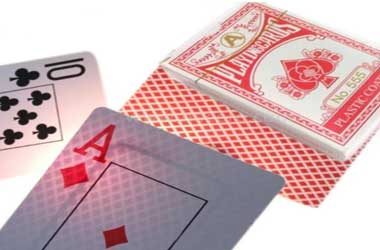Poker Hole Card Camera: How It Changed the Future of the Game

Thanks to a small gadget that’s become a part of the poker world fairly recently, you can do so very easily.
This device is a poker hole card camera. More about it below, so read on.
What Is a Hole Card Cam?
Before we start discussing the history and significance of a hole card camera for poker, you should understand what this poker gadget is. A hole card camera is a small recording device that sits on the poker table.
It records a player’s face down or hole cards during gameplay.
By doing this, the camera helps the viewers follow the game more closely and better understand the player’s decisions.
Invention of the Poker Hole Card Camera

However, this device has been introduced into poker only recently, and we can thank one man for it — Henry Orenstein.
Here’s how it all came about.
Poker has been around for a long time, and it has always had an audience.
Nevertheless, the game did not enjoy nearly as much popularity as it does now. It was first broadcasted in the US around the 1970s, contributing to its overall appeal, but not in a big way.
At the time, TV shows portrayed poker in a detached light. The viewers could see players at the table and their bets, but they could not see the cards the players were holding. It was only through commentators and announcers that they had any insight into the specifics.
However, even the commentators had no idea about the players’ hole cards. They had to rely on their knowledge of the game and people-reading skills to determine what was happening at the table. Needless to say, they could only do so much, and their guesses weren’t always correct. As a result, it was very hard for viewers to keep up with the game and understand the reasoning behind the players’ decisions.
One of those viewers was Henry Orenstein. He was a professional poker player, an inventor, and an entrepreneur. Watching TV, he knew something was missing. Reportedly, Orenstein felt boredom mid-game, so he decided to find a solution to the problem at hand. Thus, hole card cameras were developed.
Poker Hole Card Cam Boom
With over 100 patents to his name, Orenstein knew he was on to something as soon as he came up with the poker hole card cam idea. He presented it to his close friend, Mori Eskandani, a fellow pro poker player, in 1995. However, Eskandani wasn’t thrilled about it. He believed professional players wouldn’t want to share their tips and tricks or reveal the secrets to their gameplays with the world. So, he initially dismissed the idea completely.
He was right. Many professional players were hesitant to support the use of hole card cams. They’ve worked on learning and improving their skills long and hard, so why would they want to volunteer them to a bunch of strangers? The idea seemed even less appealing when put in the context of professional play. What is the point of letting your opponents know how you play poker?
However, these concerns were only a fraction of the world’s reaction to poker hole card cameras. Most poker players were delighted. It took only a few years for the idea to take off completely. The world of poker was never the same again.

They could see the cards the players had, and they knew the reason behind folded cards, they could guess how the game would play out, and so forth.
On top of that, commentators and announcers had plenty more material to work with, which made the game even more exciting and enjoyable. The show quickly gained a huge following and became a big hit.
The camera went fully mainstream once ESPN started using it for its coverage of WSOP in 2002. It was one of the main contributors to what we know as the “poker book”. For instance, the broadcast of Moneymaker’s legendary win in the 2003 WSOP Main Event wouldn’t be the same without it. Seeing his bluff and strategy throughout the tournaments helped viewers immerse in the game and relate to the player on a higher level.
Shortly after, players who were initially against hole card cams came around. They could see this gadget’s role in popularizing the game and knew it could only work in their interest.
The famous poker pro, Phil Hellmuth, discussed the hole card cam topic from his perspective on a podcast once. He admitted he wasn’t a hole card cam advocate from the very beginning — the device wasn’t around when his first big wins happened. However, over time, he realized this camera helped poker reach a wider audience, let more people learn about the game in a simple way, and made viewers more knowledgeable in the long run.
Future of Poker Hole Card Cameras
After the above-discussed boom, all poker shows started using hole card cameras. These gadgets helped poker shows gain traction and engage their audiences. However, like any piece of technology, they had to become obsolete at a certain point in time.
If you’re a fan of modern poker shows, you’ve probably noticed how rare hole card cams are now. The reason for this change lies in technological evolution. The digital age brought about numerous improvements in a short amount of time. One of them was RFID cards.

This device sends radio waves that activate the chips. The chips send electromagnetic or electrostatic signals in response.
The reader converts these signals into data, identifies the cards, and the show displays this information to the viewers.
To that end, RFID cards have the same function as hole card cams. They provide the viewers with details about the cards particular players are holding in more or less the same way. However, the RFID system makes the identification process more convenient for the players.
During the era of hole card cams, players had to position their cards perfectly for the camera to record them properly. Situations where players didn’t flick their cards well or weren’t fast enough for the camera to pick them up were relatively common. With RFID technology, players don’t have to do anything outside the regular gameplay. This invention gives them more room to relax and lets them focus on the game. In that sense, RFID cards are an upgrade on hole card cam, but they don’t diminish these devices’ legacy.
Final Thoughts
The invention of hole card cameras is among the most significant events in poker history. These gadgets changed the way people see the game and raised it to massive levels of popularity. They gave poker pros more opportunities to enjoy the game and further their career.
While we moved on from hole card cams to more advanced technology, their impact should never be forgotten. Had it not been for Oreinstein and his ingenious idea, the future of poker would never have looked this bright.
Hi, I am the Chief Editor of top10pokersites.net, this site is dedicated to all thing poker. I have been working around the poker industry for the last 15 years, with different brands. The main purpose of this site is to keep you uptodate with the industry and offer you the best deals around.










